
It was September, and we were waiting in the lobby of the office building at the Toyota Tahara plant for a young man, Yuma Hattori, that we expected would be donning the familiar Toyota work uniform.

※The article has been published in Toyota Global Newsroom on January 28, 2019.
Long-distance runner Yuma Hattori, 25, works in Toyota Motor Corporation’s Tahara Plant/Tahara Plant Administration Division.
It was September, and we were waiting in the lobby of the office building at the Toyota Tahara plant for a young man, Yuma Hattori, that we expected would be donning the familiar Toyota work uniform. Hattori, a long-distance runner, had just finished working from 9 a.m. to 2 p.m. We caught him before he was leaving to go on a solo run in the evening. Hattori is one of the “Hattori brothers”, the other being his one-year-younger brother, Hazuma, and both are well-known in Japan for their fast running abilities from when they ran for Toyo University, in the “New Year Ekiden”, Japan’s famous long-distance relay race.
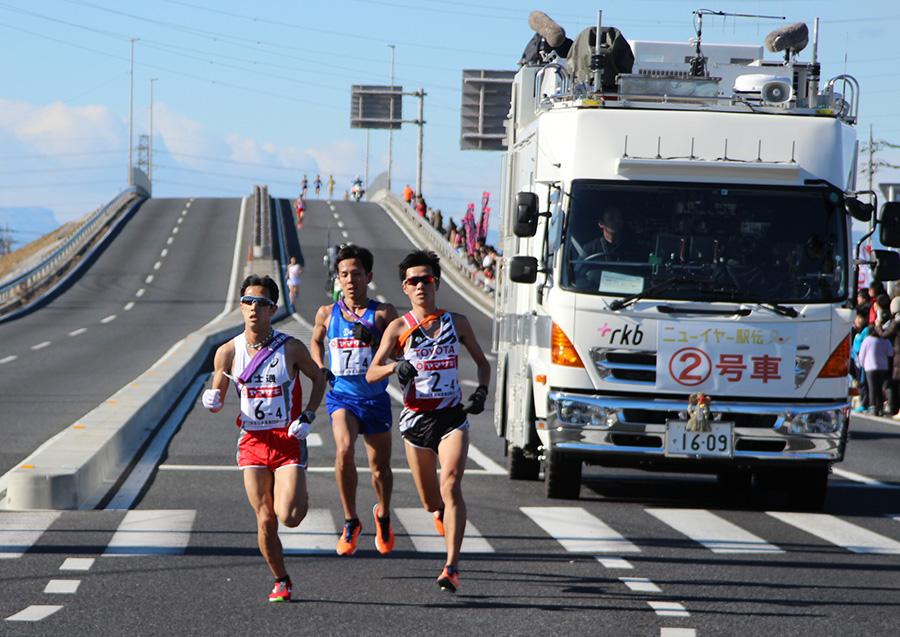
The challenge of leaping from soccer to long-distance running
We started talking about his running history – why he decided to run and what that meant to him.
In his elementary school days, Hattori, who was born in Niigata Prefecture, excelled in soccer. Playing on a regional club team, he progressed annually, eventually being selected not only as a member of the prefectural team, but also for the Hokushin’etsu team, a semi-regional team representing five prefectures in central-north Japan. As he began attending junior high school, however, he learned that they did not have a soccer squad, so Hattori had to make a decision of what he would be pursue – he decided to make the leap to track & field as a long-distance runner.
“I chose long-distance [running] because I thought I was good at endurance running. I also started to wonder if my [soccer] ability was good enough to [continue]. With encouragement from my parents, I felt I wanted to take up a new challenge by switching sport[s].
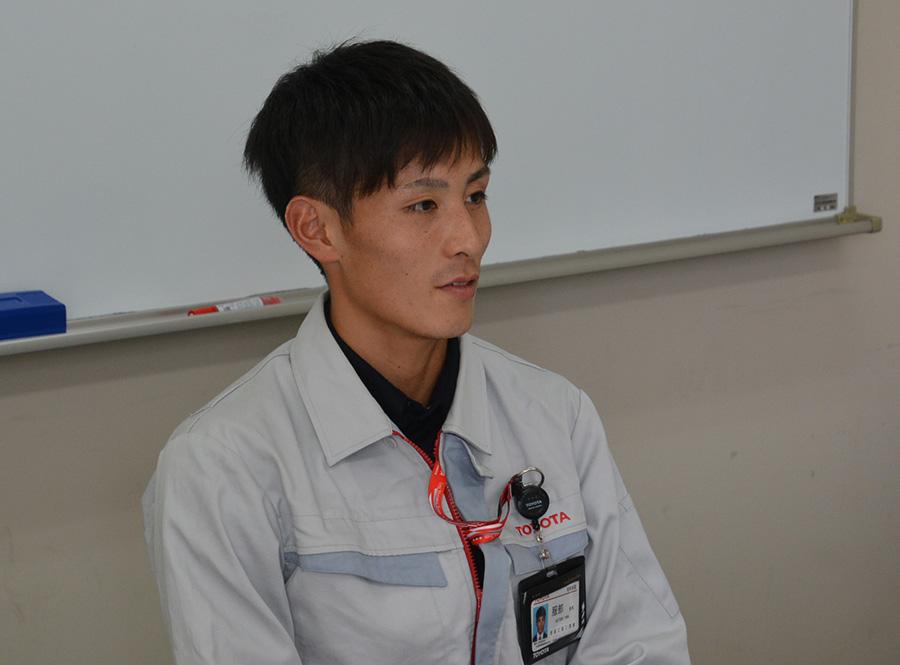
In junior high, Hattori set a goal to keep pace with the strongest team members. He trained diligently, and, by the time he was in his third year, he placed seventh nationwide in the 1,500 meter relay race. The results led to being scouted by Sendai Ikuei Gakuen High School in Miyagi Prefecture, known for fielding strong ekiden teams. Hattori was hesitant, at first, to jump at the opportunity.
“I had been thinking about attending a local high school, so that I could commute from home. [I] wonder[ed] to myself: ‘This could change my life. Maybe I should go?’. With my parents’ backing, I decided to attend.”
One thing that’s for sure is that if Hattori had not made that choice, he wouldn’t be where he is today. His parents, behind him at each step along the way, provided their support when he took up long-distance running and again when he decided to go to a high school with a strong ekiden team. Hattori reminds us all of the importance of having support from others and believing in ourselves and others during times when we challenge ourselves.
Being able to achieve an ideal run
For Hattori, the toughest thing in high school was getting used to living on his own in a dormitory. Dorm life meant that, in addition to studying and training, nearly all aspects of daily living, from cleaning to laundry, were his personal responsibility. Fortunately, in his second year, he was followed by his younger brother Hazuma, who enrolled in the same school. The experience brought them even closer together, a relationship that continues to be strong to this day.
“[Even now] my brother and I are often in contact, and I ask him about racing strategies and how to concentrate. I always learn from him about racing philosophy and about how to mentally approach a race. I’m really lucky that we’re both into the same thing. There’s no way I could have gotten here on my own.”
After graduating from high school, Hattori attended Toyo University. Despite being able to run well in high school, at first, he had a hard time adjusting to the distances that needed to be run at the university.
“In high school, we would run 10 kilometers at the most. But, in university, 20 kilometers is the baseline. I didn’t have the stamina to go that far. In my first year, I was selected to run an ekiden ‘ace’ leg, but I was shocked to find out how lacking I was in strength.”
As a freshman in the All Nihon University Ekiden (all Japan university-level long-distance relay race), Hattori finished sixth in the eighth leg. The eighth leg was known as the one where each school had positioned its ace runners. Next, in the annual Tokyo-Hakone intercollegiate ekiden (Hakone Ekiden), he finished third in the ninth (second-to-final) leg. Although those are arguably good results, they were not enough to meet Hattori’s definition of an ideal run.
“Keeping the same rhythm and form all the way from start to finish is what I call ideal. I could only manage to do that up to the 15-kilometer mark.”
Of course, during his first year at university, Hattori was able to gain a firm sense of how far 20 kilometers is for runners. By focusing his efforts on things like increasing his monthly running distance and strength training, he was able to achieve his image of an ideal run, staying in stride all the way to the finish line by autumn of his second year. In fact, he even set a new student record by completing the Kanakuri Memorial Kumanichi 30 Kilo Road Race in just 1 hour, 28 minutes, and 52 seconds. Then, in his second and third years at Toyo, he was given the second leg, another ‘ace’ leg, in the Hakone Ekiden.
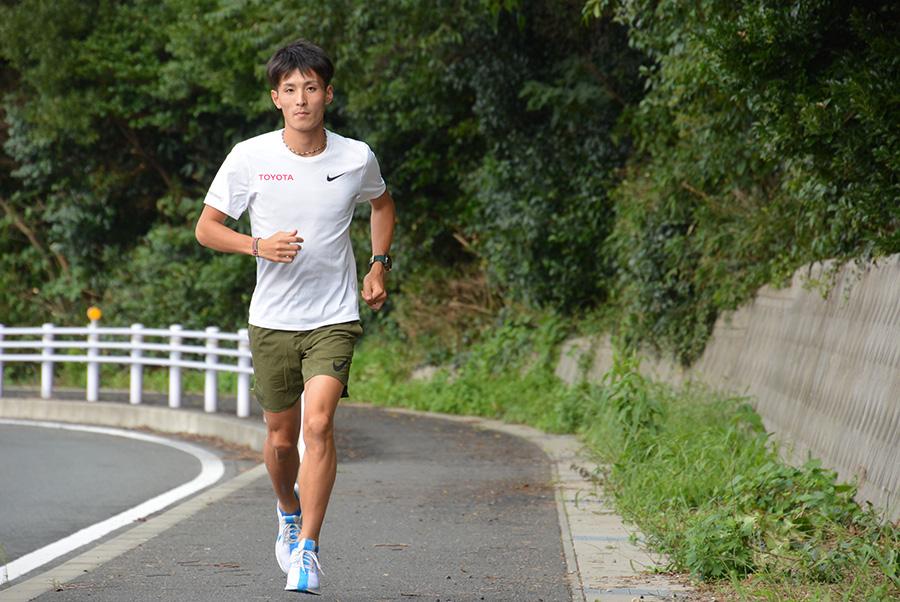
“In the Hakone Ekiden, one mistake can lose the team the race, so there’s lots of pressure. Every year has offered me a chance to figure out how to handle the tough course, and I was gradually able to shorten my times. So, even while feeling a considerable amount of stress in having to run the second leg, on which all eyes were set, I was able to discover how I could enjoy it.”
In both his third and fourth years, Hattori had the fastest times in the second leg of the Hakone Ekiden. He had overcome the pressure and was able to fulfill his responsibilities as an ace runner.
What Toyota and sports have in common
After graduating from university, Hattori joined Toyota in 2016. We decided to ask him why he chose Toyota, and he gave us quite a surprising answer:
“During a university seminar, I was looking up some information on Toyota. As a long-distance runner, I am constantly aware of the need for kaizen (continuous improvement). [Learning] that Toyota had the same kind of thinking drew my interest.”
Hearing that Hattori made this kaizen connection between his sport and Toyota inspired us (the interviewers) want to strengthen our ability to work and to do kaizen as Toyota employees. He continued:
“When I thought about the role of kaizen in increasing my competitiveness, what I lacked were knowledge and experience (for actually doing kaizen). I thought that broadening my knowledge and experience as well as growing as a person would lead to increasing my competitiveness.”
Now, Hattori has his sights set on something global and big – representing his home country of Japan in the men’s marathon of the Olympic Games Tokyo 2020. While he was happy to join Toyota when he saw its ekiden achievements, he was especially moved by the aspirations of Head Coach Toshinobu Sato’s desire to “develop athletes who are recognized around the world, even marathon [runners].”
The obstacle of the final seven kilometers
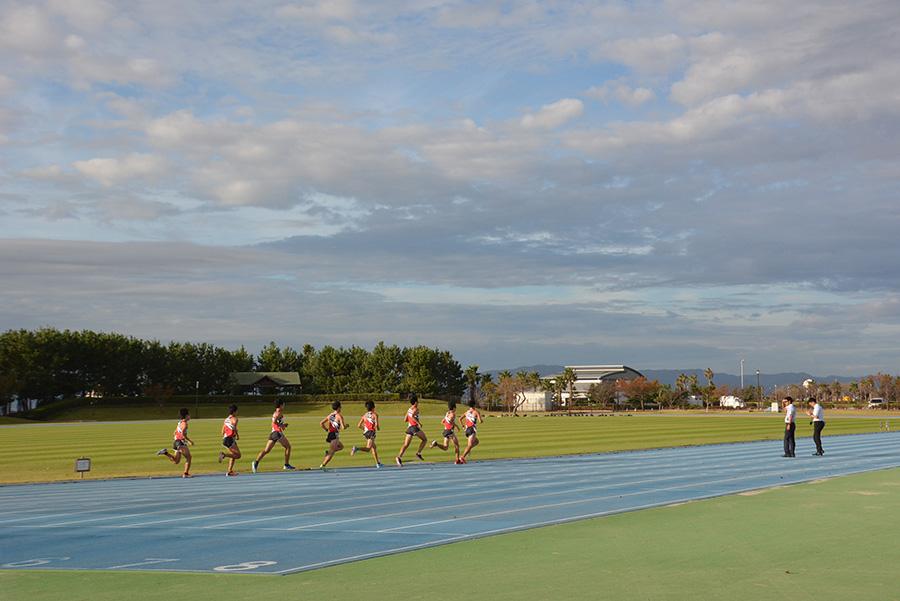
Offered a chance to see and take pictures of the team’s practice on October 5, we went to Shiroya Seaside Park (in Tahara City, Aichi Prefecture), a park that faces Mikawa Bay. Although a windbreak forest obstructs the view of the ocean from the athletic field, the grounds are still swept by strong salt air gusts. It’s said to be the ideal place for training for the New Year Ekiden, which is often called “a battle against the wind”.
The team’s runners consist of athletes who specialize in long-distance events, including marathons, half-marathons, the 5,000 meters, and other races. As such, there are few occasions in which the team practices together as one. Unfortunately, Hattori wasn’t there on that day, as he was away preparing for his next marathon.
For his first two years at Toyota, Hattori found himself struggling. For two races in a row, his body started to stall after running 35 kilometers. The final seven kilometers became a real challenge. Marathons are 42.195 kilometers long, and often run with participating runners checking their pace every five kilometers. At the 35-kilometer mark, Hattori says he regularly became distracted by thoughts such as, “Oh my… There are still seven kilometers to go?”
“Before running, I would work out my strategy, deciding how to run, and make that my only focus. At the 40-kilometer mark, I could simply tell myself that there are only five more kilometers to go. Instead, I gradually got into the habit of thinking about how much further I still had to run. When I let myself be distracted like that, I was unable to run the race I had planned.”
For top-class marathoners, a pace of one kilometer every three minutes is considered the basic speed. The important thing is how far one can run while maintaining that pace. In Hattori’s case, his pace in the final stages would often drop to three and half minutes for every kilometer. Recognizing where the challenge was, he started a daily regime of kaizen after kaizen.
While he worked to improve his running, injury struck in the form a stress fracture in his right ankle. Having no choice but to take a rest for a good five months, he fell into a state of “not being able to run, even if I wanted to”.
“Not being able to run was quite miserable, and brought on extra stress. My healing took more time than was probably needed, as I would get anxious and try to run a little, then break the same thing again. I got so depressed that it came to the point that I didn’t want to have anything to do with the others on the team.”
What determines victory or defeat
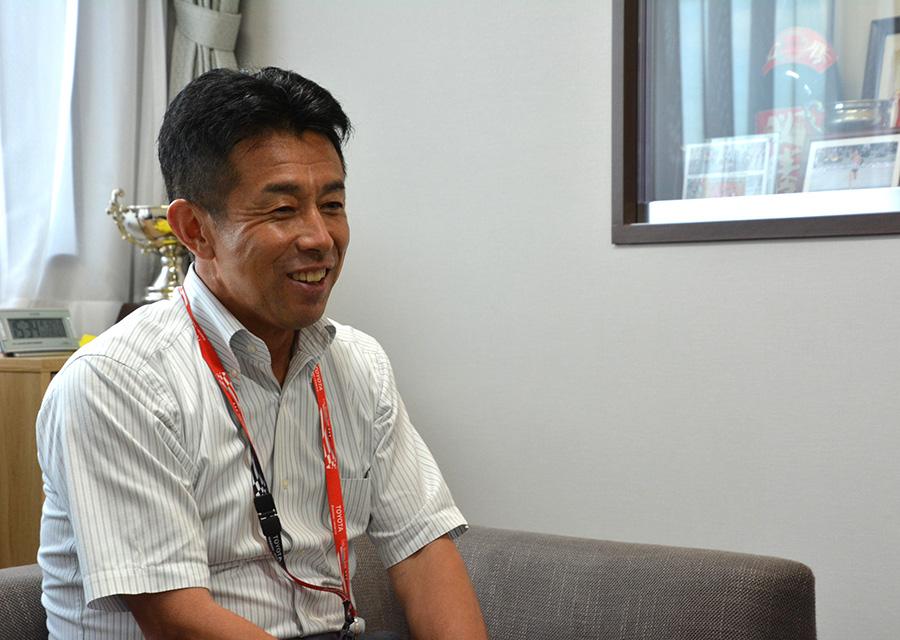
“I told him to think again one more time about his own goals and why he chose Toyota.”
That’s all Sato, Hattori’s head coach, said to him. Then, he waited to see if things would take a turn for the better. Following his recovery, Hattori eased back into running. Sato then told us that once Hattori set a clear goal to compete in the Prague Marathon in the Czech Republic in May 2018, he gained back his composure. Meanwhile, he still needed to work on how to maintain his pace during the final stages of the race.
“Due to risk of injury and other issues, training by running the same distance as a marathon at racing pace can’t be done. As such, it’s not easy to recreate the exact conditions of the final stages and get your body to handle it,” said Sato.
Sato suggested, however, that there are other ways to train for those final stages. Some ways include pushing oneself extremely hard over the course of two days, running for a distance longer than a marathon paced at a longer time, as well as running without rehydrating via sips of water. According to Sato, when it comes to training, there are two types: “clean training” and “training that smells like mud”.
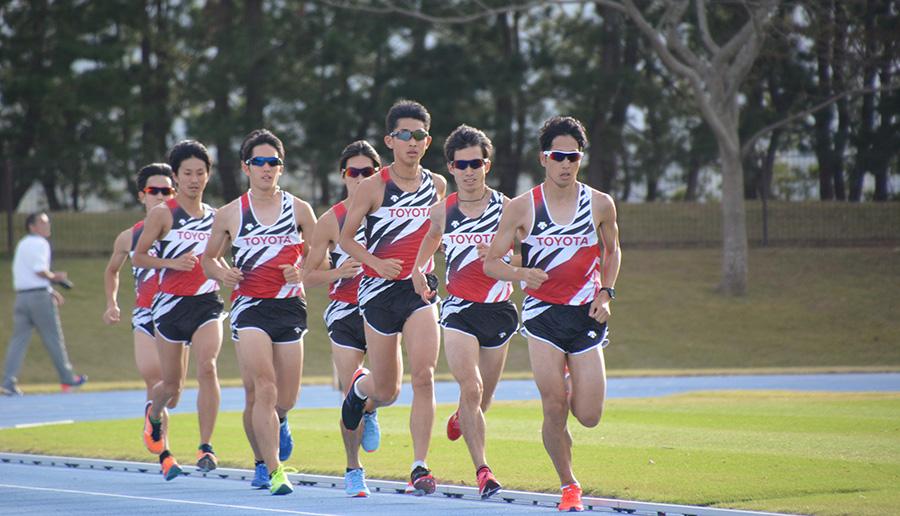
“’Clean training’ is when you pursue your target time. ‘Training that smells like mud’ is when you jog around and such for three hours. Finishing practice early by pumping up the speed and toughing it out is something that anyone in sports can do. On the other hand, running for a long time while not really going fast can really be tough, which, unfortunately, sometimes leads runners to start wondering whether they can make it through competition,” Sato explained.
The latter described Hattori’s situation. He had thought that when training by running for a long time that he had “just built up a lot of fatigue”. However, it was just such “training that smells like mud” that helped Hattori’s mind and body get what it needed in the race’s final stages.
“When the going really gets tough, what I remember is all the boring, mud-smelling training I went through. Even during the Prague Marathon, I remembered all the things I had done (in preparation), and that let me run with room to spare, both mentally and physically.”
Although Hattori didn’t mark a personal best in Prague, he discovered that he was able to run at a pace of 3 minutes and 10 to 15 seconds for every kilometer in the race’s final stages. Marathons challenge the limits runners’ physical and mental strengths. Perhaps one could say that the factor that determines victory or defeat is the degree a person has pushed oneself to in training.
The definition of a strong athlete
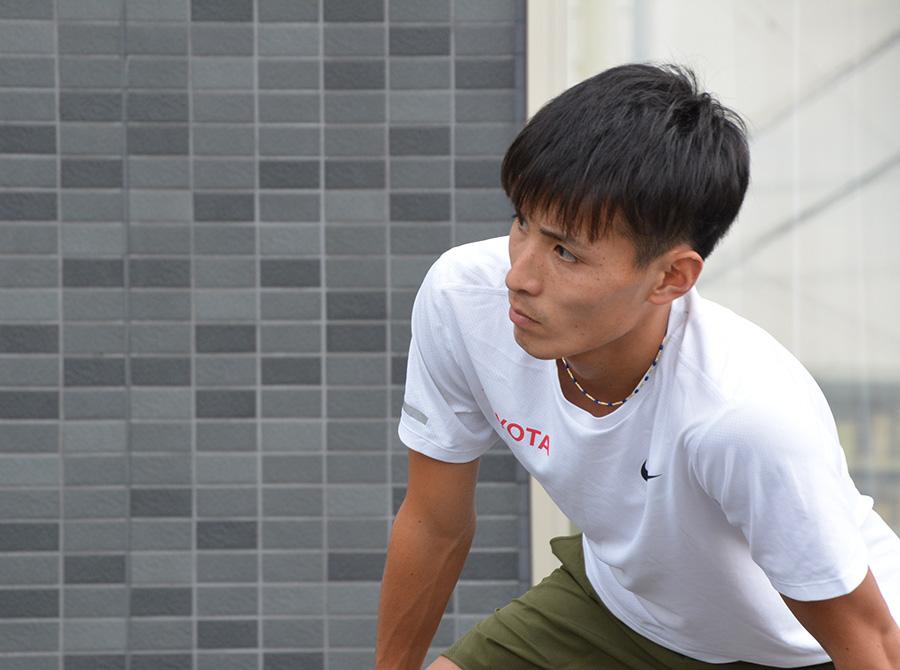
Sato, speaking passionately, said: “I think that camp helped him realize that he still has some way to go before he can overcome his weaknesses. Hattori has great ability as an athlete, and can bring out his full power in a race. I’m looking forward to him getting even stronger.”
Next came the Fukuoka International Open Marathon Championship. On December 12, 2018, Hattori relied on an accumulation of hard effort and kaizen to demolish his final-seven-kilometer barrier. At 2 hours, 7 minutes, and 27 seconds, he not only recorded the eighth all-time best for a Japanese marathon runner, he also earned the first win for a Japanese runner in the event in 14 years. Victory has given him the right to run in the Marathon Grand Championship (MGC), one of the Tokyo 2020 qualifying events, raising his stature as a promising candidate to compete in the marathon in Tokyo 2020.
With three months still to go before the MGC, we hope that Hattori will continue growing and that he will shine brightly in this important event.
About the MGC:
The Japan Association of Athletics Federations has promoted the Marathon Grand Championship (MGC) as a vital event for preparing for the Tokyo 2020 Games, as it allows runners to gain experience running on a course that will be nearly identical to the course used at the Games. For the MGC in September, the top two Japanese finishers in the male and female categories will earn spots to represent Japan for the Tokyo 2020 Games. Qualifying to run in the MGC required turning in good performances in races from the summer of 2017 to the spring of 2019.
For Reference:
Hazuma, Hattori’s brother, is now an employee of company based in based in Nagoya), and is also eyeing the Olympic Games Tokyo 2020 in the 5,000 meters event. He placed first in the same event in the 2018 Japan Championships in Athletics.
Profile
Date of birth
November 13, 1993
Place of birth
Tokamachi City, Niigata Prefecture
Alma maters
Sendai Ikuei Gakuen High School; Toyo University
Family
Father, mother, two younger brothers, and younger sister

